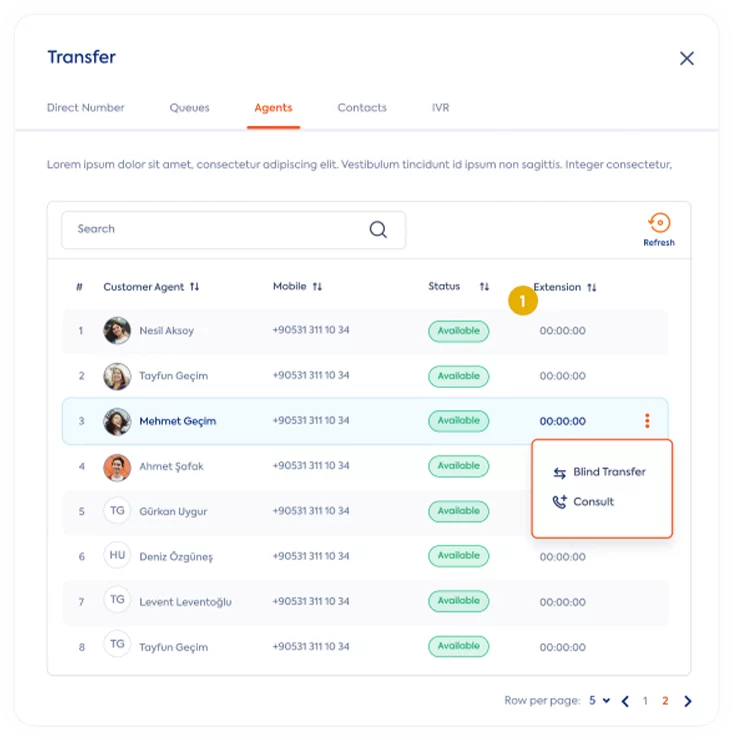If you’re still doing manual call monitoring or relying only on sampling, you’re missing out on efficiency, consistency, and risk mitigation in quality assurance (QA)
Research shows that using AI in QA can:
- Make agents around 25–30% more efficient, and
- Give customers a 5–10% better experience.
This article explains how CX Insights lets you use automation to ensure compliance without draining the time and morale of your QA teams.
Why Review of Call Transcription Matters?
Quality assurance (QA) teams review call transcripts because they want to measure and improve the quality of customer interactions in a systematic, evidence-based way. The main reasons why they do it are:
1. Monitor Script Compliance
QA teams check transcripts to confirm that agents follow required scripts, legal disclosures, or company policies. This process is made scalable and consistent with call script compliance automation.
- Example: Ensuring agents mention refund policies or data privacy statements.
2. Evaluate Agent Performance
Transcripts let QA see how well agents communicate, including tone, empathy, accuracy, and problem-solving skills.
- This helps in giving constructive feedback and planning training.
3. Detect Errors and Risky Behavior
By reading transcripts, QA can spot mistakes, misinformation, or inappropriate behavior that could harm the brand or create legal issues.
- Early detection reduces compliance and reputation risks.
4. Find Process Gaps and Training Needs
Transcripts reveal patterns of recurring customer problems or agent confusion, showing where workflows, policies, or training need improvement.
5. Improve Customer Experience
QA uses transcript analysis to identify what makes customers satisfied or frustrated, then works with other teams to improve service quality and consistency.
Why Do You Need to Automate Call Reviews?
As you see above, the benefits of call transcription are huge.
But the thing is, even if you have the best QA team, the manual quality assurance gives only about 70‑80 % accuracy, whereas a largely automated QA process can push that above 90%. (McKinsey)
Besides, QA teams can only listen to a small slice of all those calls. So naturally:
- Agents might skip something they were supposed to say,
- They can say things the wrong way, or
- They make mistakes that could cause legal trouble or hurt your brand’s reputation.
However, when you replace manual work with AI-powered CX Insights, the effects are real. It slashes QA costs by more than 50% while improving accuracy.
Organizations that integrate AI call monitoring tools and automated QA contact center solutions report dramatic savings and real-time call compliance detection. Because thanks to automation:
- Every call is transcribed
- Deviations are flagged, and
- Risk phrases or missing disclosures get highlighted immediately.
And because it is automated, CX Insights applies the same criteria consistently across all agents and all calls, which eliminates reviewer bias or fatigue.
In conclusion, automation enables you to shift from sampling to full coverage, from reaction to prevention.
With CX Insight-based automation, managers have:
- Stronger speech analytics compliance,
- Less time spent by your QA staff on reactive audits,
- Brighter alerts when something goes wrong, and
- A clearer, unified standard across the organization.
Common Concerns & Risks for Script Automation
Managers have some concerns about automation, like:
- It feels cold,
- Agents get penalized unfairly, or
- It’s too complex to manage.
Let’s break down three main concerns and see how managers can overcome them:
1. False positives/negatives
Any AI system will make mistakes. But with proper training, calibration, and human‑in‑the‑loop overrides, you can keep error rates very low.
2. Agent morale
When agents think someone’s just watching to catch them messing up, they’ll stop trusting the process, and maybe even management. Instead, show them that these insights are there to help them improve, like a coach reviewing game footage, not a hall monitor waiting to call them out. Praise what they’re doing right, not just what they’re doing wrong.
3. Data privacy & security
Transcriptions, speech data, and storage…All need to meet regulatory standards. Ensure your solution (such as CX Insights) is compliant with whatever your industry requires.
How to Deploy Script Compliance Automation with CX Insights
Deployment may take time, but it pays off. We’ve created a roadmap for implementing script adherence tracking AI in your center. It consists of four main steps.
1. Define your scripts and compliance criteria
Identify all required disclosures, legal phrasing, and key script elements.
Make a list of all the important things agents must say on a call, like legal notes, required phrases, or must-ask questions.
Also note where there’s some wiggle room, like tone or wording, so the AI doesn’t flag harmless differences.
2. Turn on call tracking and transcription
Set the system to transcribe every call so you have full records. And train any AI models on your existing call recordings so they learns your vocabulary, accent, and style.
3. Configure real‑time monitoring & alerts
Use tools that allow real-time call script compliance automation so alerts fire when deviations happen. You can even set what counts as a “big deal” that a supervisor should look at immediately. This is where AI-driven quality assurance shines.
4. Review dashboards, take actions, and refine.
Look at trends in the dashboard to see who needs help or which parts of the script confuse people. Use insights to refine playbooks, not just punish. This helps to automate contact center QA processes and maintain consistency.
5. Choose the right tools
Not all compliance tools are created equal. If you want to reduce manual QA workload without sacrificing quality, think of this as your checklist for compliance automation for contact centers:
- High‑accuracy transcription of 100 percent of calls
- Automated detection of script deviations,
- Real‑time flagging or alerting
- Actionable dashboards and feedback loops
Call Center Studio is providing all of these in a single platform, along with call quality monitoring software that powers better decision-making.
Schedule your CX Insights Call Center Studio demo and be our partner. Let’s enter a new era of script compliance together.






